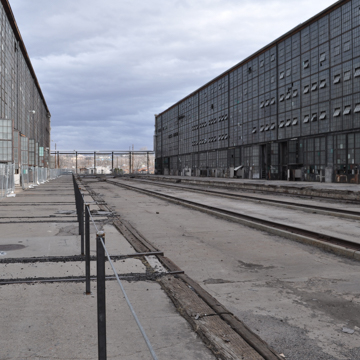The 60 x 604-foot depressed concrete transfer table runs between the machine and boiler shops and originally functioned as a bridge to move boilers and locomotives between the two buildings. It reminds us that the space between buildings was often as important as the buildings themselves in the layout and functioning of this industrial complex.
References
Dodge, William A., Maryellen Hennessy, Edgar Bolson, and Petra Morris, “Atchison, Topeka & Santa Fe Railway Locomotive Shops,” Bernalillo County, New Mexico. National Register of Historic Places Registration Form, 2014. National Park Service, U.S. Department of the Interior, Washington, D.C.
Moses, Nalina. “Going the Extra Yards.” AIArchitect, August 8, 2014.
Wilson, Chris. “The Historic Railroad Buildings of Albuquerque: An Assessment of Significance.” Prepared for the Redevelopment Division, Planning Department, City of Albuquerque, 1986.

